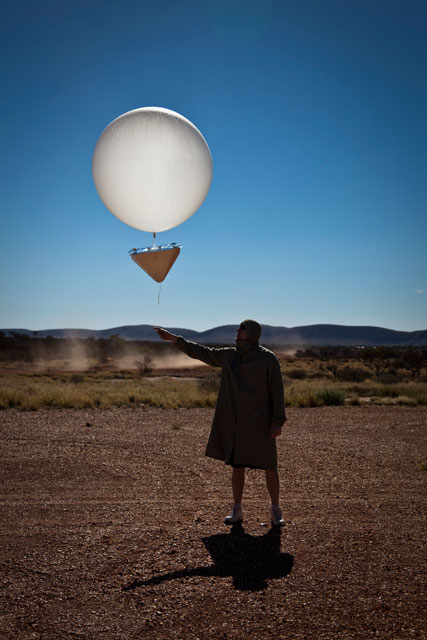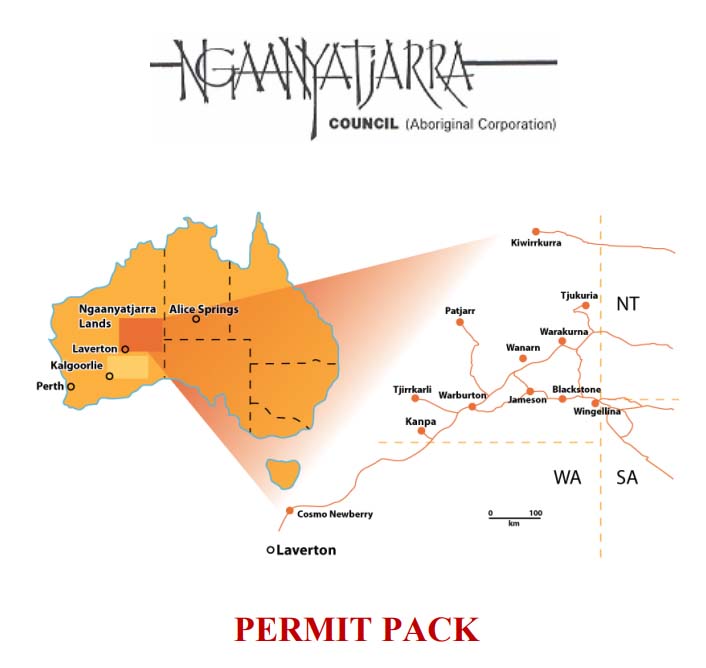Warakurna
Roadhouse
Fuel, Food and Accommodation on The Great Central Road
Warakurna Roadhouse – Local Attractions
Warakurna Artists is proud of their new Yurliya Gallery.
The gallery offers visitors a unique cultural and artistic experience and offers have paintings, hand woven baskets, sculpture and wooden artefacts for sale to the intrepid traveller. For more information please contact Warakurna Artists directly via their website at http://www.warakurnaartists.com.au
Giles Weather Station
The Giles Weather Station is a fully functioning meteorological observation station based at Warakurna Community. Visitors can schedule a tour of the station and view the daily release of the observation balloon. Please note the Giles Weather Station operates under Central Standard Daylight Savings Time (GMT + 10:30). For more information about visiting the Giles Weather Station, including contact details please visit – http://www.bom.gov.au/sa/giles/index.shtml
Gunbarrel Highway
The Gunbarrel Highway is an isolated desert track in the Northern Territory, South Australian and Western Australia. It consists of about 1,400 km (870 mi) of washaways, heavy corrugations, stone, sand and flood plains. By any standard, this is a long and tough haul through very remote territory. Its isolation requires travelers to be totally self-sufficient with water, food and fuel (the longest distance between fuel outlets is 489 km, between Warburton and Carnegie Station.)
The Gunbarrel Highway connects Victory Downs, just north of the Northern Territory/South Australia border to Carnegie Station in Western Australia (this is the direction the road was constructed) – it does not extend to Wiluna. Three permits are required to drive the entire Gunbarrel Highway and they are available from the Department of Indigenous Affairs at no charge.
The Gunbarrel Highway was built as part of Australia’s role in the weapons research establishment called Woomera which included Emu Field and Maralinga, both atomic bomb testing sites. Construction began in 1955 and was finally completed on 15 November 1958 when the road reached Carnegie. The highway was surveyed and constructed under the direction of legendary bushman Len Beadell, who was responsible for numerous other roads in Australia that opened up some of the most remote desert areas of the continent in the 1950s and 1960s. Its name comes from Beadell’s Gunbarrel Road Construction Party so named as his intention was to build roads as straight as a gun barrel. This was only sporadically achieved however, due to the nature and variety of terrain through which the roads passed. Part of the highway between Warburton and Warakurna is now known as the Old Gunbarrel Highway, and is no longer maintained due to the construction of the more direct route, the Great Central Road.
More information on Warakurna
Warakurna is located at the western end of the majestic Rawlinson Ranges. The residents are mostly Ngaanyatjarra speakers.
Many of them experienced their first contact with non-Aboriginals in the late 1930’s with the establishment of the Warburton Mission while for other residents their first contact was in the late 1950’s with the Native Patrol Officers working for the Weapons Research Establishment in Woomera, South Australia. Native Patrol Officers were employed by the Government to move the remaining nomadic Yarnangu from their country to Warburton Mission or other government settlements in the region in order to protect them from rocket debris from the “Blue Streak” research project. As a result some Yarnangu from this area were taken to Warburton Mission, and a few others were taken to missions at Jigalong and Balgo in WA and to the government settlement at Papunya in NT. The work of the Native Patrol Officers was greatly facilitated by the road construction work (including the Gunbarrell Highway) undertaken by Len Beadell who was employed by the Weapons Research Establishment. For the first time the country around the Rawlinson Ranges was opened up to mechanised transport allowing for easier access from the south, west and east. This also allowed for the establishment of the Giles Weather Station on an area excised from the Reserve in 1956 for this purpose. In 1991 this excision was handed over to the Ngaanyatjarra Council who now sub-lease it back to the Commonwealth.
By the 1960’s a new government settlement was established at Docker River, just across the WA / NT border and only 100km north-east of the Giles Weather Station. Many Yarnangu traditionally from the Warakurna area moved to Docker River from Papunya to be closer to their homelands. Docker River provided an ideal base from which people could make visits during holiday periods to the many rockholes at the base of the Rawlinson Ranges.
In the early 1970’s several factors, including the availability of government funding for homelands, easier road access, over-crowding at Docker River settlement and Warburton Mission, all combined to make the location of Giles Weather Station ideal for a new community. The Warakurna Community was incorporated in 1976.
Ngaanyatjarra Lands
The Ngaanyatjarra Lands comprise a vast area of Western Australia (250,000 square kilometres) adjoining the Northern Territory and South Australian borders. The Ngaanyatjarra Lands are entirely within the state of Western Australia and fall within the Shire of Ngaanyatjarraku, the Shire of East Pilbara and the Shire of Laverton.
The Ngaanyatjarra Lands encompass sections of the Gibson Desert, Great Sandy Desert, Great Victoria Desert, and all of the Central Ranges within Western Australia. These immense areas of spectacular scenery have few obvious signs of human presence. The unique nature of the Ngaanyatjarra Lands, coupled with their remote location, precludes many land management activities that are practiced elsewhere in Australia. There has never been a pastoral industry and, apart from a few activities such as sandalwood harvesting, collection of dingo scalps and prospecting, there has been no other industry. The Ngaanyatjarra people have maintained a continuous association with their country and comprise the majority resident population.
Ngaanyatjarra Council
The Ngaanyatjarra Council is the principal organisation of governance in the Ngaanyatjarra Lands. The Council’s main objective is to provide support for the development of its members (in regard to health, education, housing, law and justice matters, finance and through a variety of commercial enterprises) and to achieve land rights for Ngaanyatjarra people. The Ngaanyatjarra Council’s administrative base is located in Alice Springs.
The Ngaanyatjarra communities operate as a cohesive and co-operative network under the umbrella of the Ngaanyatjarra Council. The Ngaanyatjarra Council endeavours to provide Ngaanyatjarra people remaining on their land with tools to ensure their lands are governed in a relevant and practical fashion that directly responds to their priorities and needs.
Outback Highway
The Outback Way extends 2,800km from Laverton, Western Australia to Winton, Queensland via central Australia. As a self-drive route it passes through central Australia’s deserts, Ayers Rock, The Olga’s, Alice Springs and a host of fascinating places. The Outback Way is made up of seven inter-connecting roads including The Great Central Road (WA); Tjukaruru Road, Lasseter Highway, Stuart Highway and Plenty Highway (NT); and Donohue Highway and Min Min Byway (QLD).
The Great Central Road is the main form of access to the Warakurna Roadhouse. It bisects the Ngaanyatjarra Lands east to southwest, providing access to those living on the lands to two major regional centres – Alice Springs and Kalgoorlie. The 2,000 kilometre section of road from Laverton to Uluru National Park is unsealed and subject to wet weather closure.
The best time to travel the Outback Way is during the cooler months from April to October. The route passes through ten bioregions that are each characterised with a unique combination of flora, fauna, geology and landscape characteristics. The Outback Way is also home to The Outback Way-finder Geocache Trail, the World’s longest treasure hunt where a handheld GPS enables travellers to locate thirty four caches hidden at places of interest along the Outback Way. Warakurna Roadhouse has already featured prominently on the Geocache Trail and has welcomed a number of intrepid travellers responding to the recommendations of previous cachers.
The Outback Way offers travellers the opportunity to enjoy some of Australia’s icons as well as life in the outback, remote and rugged landscapes and an adventurous journey travelling across outback Australia. The Outback Way is all about the journey and enjoying the unspoilt wonders of Australia’s central deserts and remote outback. Warakurna Roadhouse is proud to feature as one of the premier stops along the way.
Trading Hours
Regular Trading Hours
- Monday to Friday 08:30 - 17:00 (WST)
- Saturday and Sunday 08:30 - 15:00 (WST)
- Public Holidays 09:30 - 12:00 (WST)
- Closed Good Friday, Christmas Day and New Years Day
* Please note that none of the roadhouses across the Great Central Rd are open in the evenings. We advise checking the opening hours of each roadhouse prior to travel, especially if travelling on a public holiday.
Public Holiday Hours
- Good Friday 29/3/2024 – Closed – No After Hours
- Christmas Day – Closed – No After Hours
- New Years Day – Closed – No After Hours
- All Other Public Holidays 9:30am to Noon – No After Hours
Permit Information
To enter the Ngaanyatjarra Lands visitors require an entry permit. It is also necessary to have a transit permit when travelling through the Lands by road.
The application process is simple and free. You can download a permit information and application pack (PDF format) by clicking on the image below.
Current Conditions
Information Updated : 20/07/2024
Road Conditions : Road through from Warakurna to Laverton is now open. No issues. Visit the Shire website for updates https://www.ngaanyatjarraku.wa.gov.au/tourist-information/plan-your-trip/road-reports.aspx From Kata Juta towards Docker River the Road is still open. Check NT Road Conditions Web Site for updates. Note that Giles Weather Station and Museum is now open to visitors. Balloon Launches are 8.45am and 8.45pm (NT Time) Daily, 7 Days a Week. TRAVEL THROUGH NGAANYATJARRA LANDS is now PERMITTED as long as a Permit is obtained prior to travel. https://permits.ngaanyatjarra.org.au/form/lands-permit.
Weather Information : Sunny and dry. For current Weather Details please visit http://www.bom.gov.au/wa/forecasts Giles. Note that Giles Weather Station is now open to visitors. Balloon Launches are 8.45am and 8.45pm (NT Time).
Fuel Prices :
Diesel - $ 3.20 per litre
Opal* - $ 3.20 per litre
* Opal is replacement for unleaded petrol. Read more about Opal fuel by clicking here

Copyright © 2024 Warakurna Roadhouse | Designed and Hosted by Imageworkx.com









